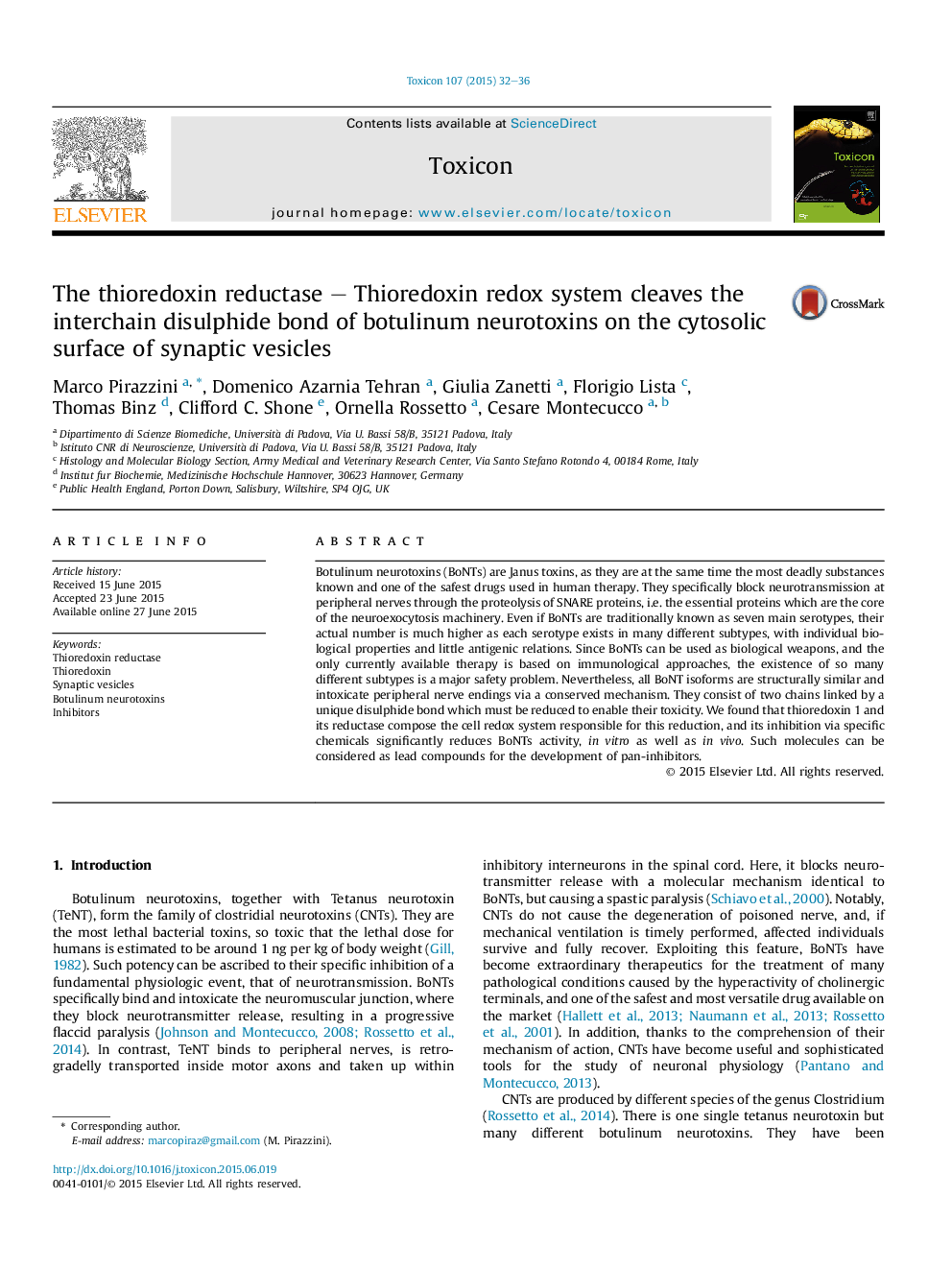| Article ID | Journal | Published Year | Pages | File Type |
|---|---|---|---|---|
| 2064335 | Toxicon | 2015 | 5 Pages |
Botulinum neurotoxins (BoNTs) are Janus toxins, as they are at the same time the most deadly substances known and one of the safest drugs used in human therapy. They specifically block neurotransmission at peripheral nerves through the proteolysis of SNARE proteins, i.e. the essential proteins which are the core of the neuroexocytosis machinery. Even if BoNTs are traditionally known as seven main serotypes, their actual number is much higher as each serotype exists in many different subtypes, with individual biological properties and little antigenic relations. Since BoNTs can be used as biological weapons, and the only currently available therapy is based on immunological approaches, the existence of so many different subtypes is a major safety problem. Nevertheless, all BoNT isoforms are structurally similar and intoxicate peripheral nerve endings via a conserved mechanism. They consist of two chains linked by a unique disulphide bond which must be reduced to enable their toxicity. We found that thioredoxin 1 and its reductase compose the cell redox system responsible for this reduction, and its inhibition via specific chemicals significantly reduces BoNTs activity, in vitro as well as in vivo. Such molecules can be considered as lead compounds for the development of pan-inhibitors.
